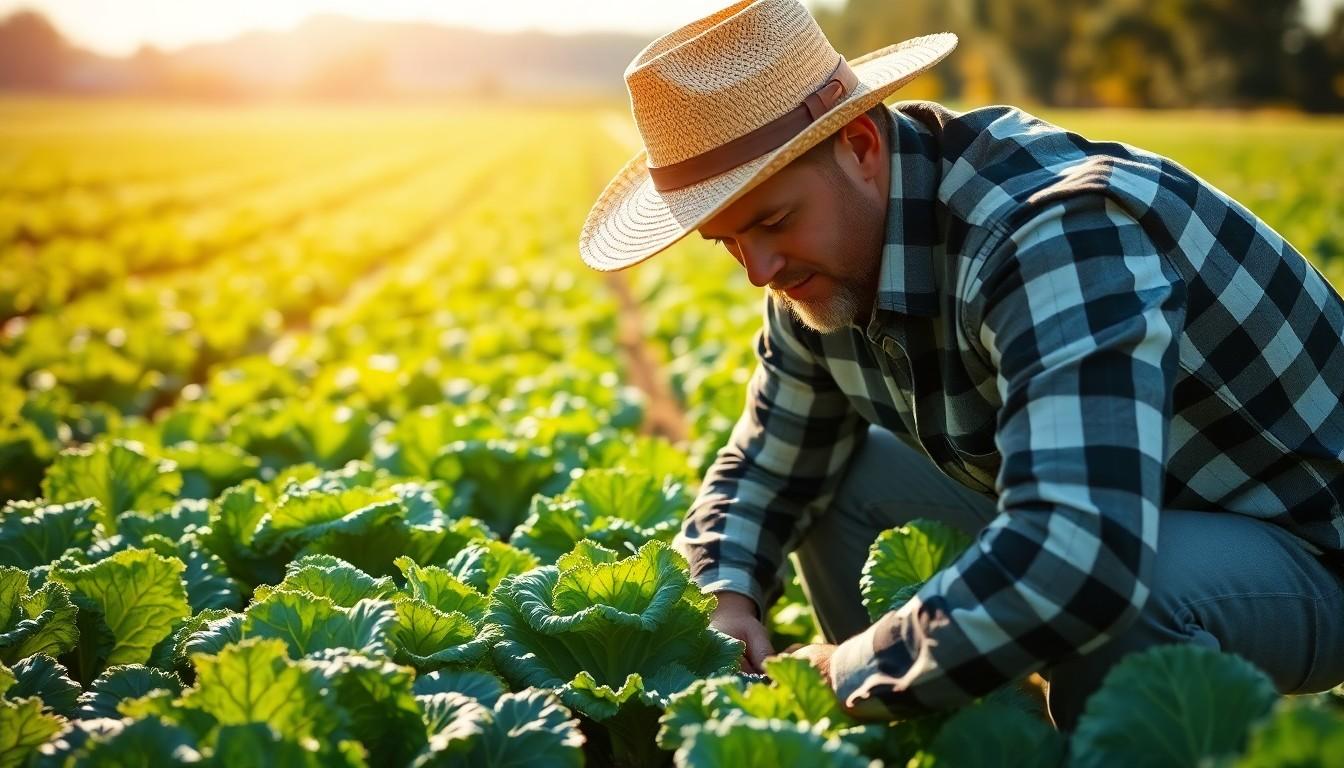The Best Fluffy Pancakes recipe you will fall in love with. Full of tips and tricks to help you make the best pancakes.

In a world where kale has become the new superhero of the food scene, the battle between organic and conventional farming rages on. Picture this: one side boasts fields of lush greens, buzzing bees, and the occasional happy chicken, while the other offers efficiency, high yields, and maybe a few questionable chemicals. It’s like choosing between a cozy, rustic cabin in the woods and a sleek, modern skyscraper—each has its perks, but which one truly stands the test of time?
Organic Farming vs Conventional Farming
Organic farming focuses on using natural processes and materials for crop production. This method prioritizes sustainability, biodiversity, and environmental health. Farmers utilize practices like crop rotation, composting, and biological pest control. Certification from bodies like the USDA ensures adherence to strict organic standards.
Conventional farming emphasizes efficiency and higher yields. This approach often relies on synthetic fertilizers, pesticides, and genetically modified organisms. These practices can maximize output but raise concerns about environmental impact and food safety.
Both farming methods have distinct advantages. Organic farming promotes soil health and reduces chemical runoff. Conventional farming supports larger-scale production to meet growing population demands.
Consumers face choices rooted in values and preferences. Many choose organic for perceived health benefits and environmental stewardship. Others favor conventional for affordability and availability.
Statistics indicate a growing market for organic produce. In 2022, organic food sales reached $57.5 billion in the U.S., reflecting an increasing consumer shift towards healthier options. Conventional farming remains the dominant method, accounting for 95% of total agricultural production, ensuring a steady food supply.
These contrasting methods invite discussions on sustainability and future food systems. Understanding the implications of both approaches aids consumers in making informed decisions. With continuous advancements and consumer awareness, the farming landscape is evolving rapidly.
Benefits of Organic Farming

Organic farming offers several advantages that can significantly impact the environment and health. It promotes sustainable practices, contributing to a healthier ecosystem.
Environmental Impact
Organic farming reduces chemical runoff, protecting local waterways and wildlife. It enhances soil health through practices like crop rotation and composting, which preserves natural nutrients. Biodiversity thrives in organic systems, fostering various species that contribute to ecological balance. Additionally, lower carbon emissions result from reduced synthetic fertilizer use. These farming methods improve resilience to climate change, making agriculture more adaptable.
Health Benefits
Eating organic produce leads to lower pesticide exposure, benefiting consumer health. Studies indicate organic food may contain higher antioxidant levels, supporting overall well-being. Many consumers prefer organic products due to their perceived health advantages, including fresher flavors and benefits from nutrient-rich soil. Furthermore, the absence of artificial preservatives aligns with many people’s dietary choices. Higher omega-3 fatty acids often found in organic dairy and meat products contribute to a more balanced diet.
Drawbacks of Organic Farming
Organic farming presents several limitations that can impact its viability.
Cost Considerations
Organic produce typically has higher prices compared to conventionally grown items. Certification requirements and natural pest control methods contribute to elevated costs. Farmers often face intense labor demands without the conveniences of synthetic inputs, which means costs can accumulate rapidly. Consequently, consumers may choose conventional options due to affordability. In 2022, organic sales reached $57.5 billion, highlighting a growing market but not overshadowing the majority share of conventional farming, which still accounts for 95% of agricultural production.
Yield Challenges
Lower yields represent a significant challenge in organic farming. Diverse cultivation techniques and the reliance on crop rotation can reduce overall output. Farmers using organic methods may encounter issues with pest management, resulting in increased crop vulnerability. According to research, organic farms can produce 19% less than their conventional counterparts. This difference poses a concern when aiming to meet global food demands. As populations grow, the pressure on organic farms to maximize production without sacrificing quality intensifies.
Benefits of Conventional Farming
Conventional farming offers several significant advantages, primarily centered around efficiency and productivity.
Higher Productivity
Higher productivity remains a standout feature of conventional farming. Conventional methods can yield more crops per acre compared to organic practices, often producing 19% more output. Farmers utilize synthetic fertilizers and pesticides to boost growth and control pests effectively. These techniques enable large-scale production, making it easier for farmers to meet consumer demands. In many cases, the efficient use of land and resources translates to an increased food supply, which becomes vital as global populations continue to rise.
Economic Viability
Economic viability of conventional farming is apparent in its contribution to the agricultural economy. Lower production costs result from using technology and chemical inputs. These cost savings lead to more affordable food prices for consumers, making conventional products accessible to a broader audience. Many farmers find conventional farming provides stable income due to higher crop yields and reduced labor costs. This model can sustain larger farming operations, boosting overall economic growth within the agricultural sector.
Drawbacks of Conventional Farming
Conventional farming methods present several drawbacks. These challenges often arise due to reliance on synthetic inputs and practices that can compromise long-term agricultural health.
Chemical Usage
Chemical usage in conventional farming creates significant concerns. Synthetic fertilizers and pesticides enhance crop yields but carry risks to human health and the environment. Long-term exposure to these chemicals can lead to health issues, impacting farmers and consumers. Contaminants from runoff frequently pollute nearby water sources, affecting aquatic ecosystems. Research indicates that these chemicals accumulate in soil over time, potentially harming beneficial microorganisms essential for soil health. While these practices meet immediate food demands, they raise questions about the sustainability of agricultural ecosystems.
Sustainability Concerns
Sustainability concerns frequently accompany conventional farming practices. Intensive farming techniques enhance productivity yet strain natural resources. Depletion of soil nutrients can occur due to constant chemical use, diminishing soil fertility over time. The reliance on monocropping limits biodiversity, which negatively affects ecosystem resilience against pests and diseases. Land degradation results from heavy machinery used in conventional farming, leading to erosion and loss of arable land. In 2022, conventional farming accounted for 95% of agricultural production, which prompts the need for a critical evaluation of its long-term sustainability.
Promotes Environmental Health
The debate between organic and conventional farming continues to shape the future of agriculture. Each method presents unique advantages and challenges that resonate with different consumer values and priorities. Organic farming promotes environmental health and sustainability but often comes with higher costs and lower yields. On the other hand, conventional farming excels in efficiency and affordability but raises concerns about chemical usage and long-term sustainability.
As the market for organic produce grows, consumers face a choice that reflects their beliefs about health, the environment, and food accessibility. Ultimately, understanding both farming practices will empower individuals to make informed decisions that align with their values and contribute to a more sustainable food system.
